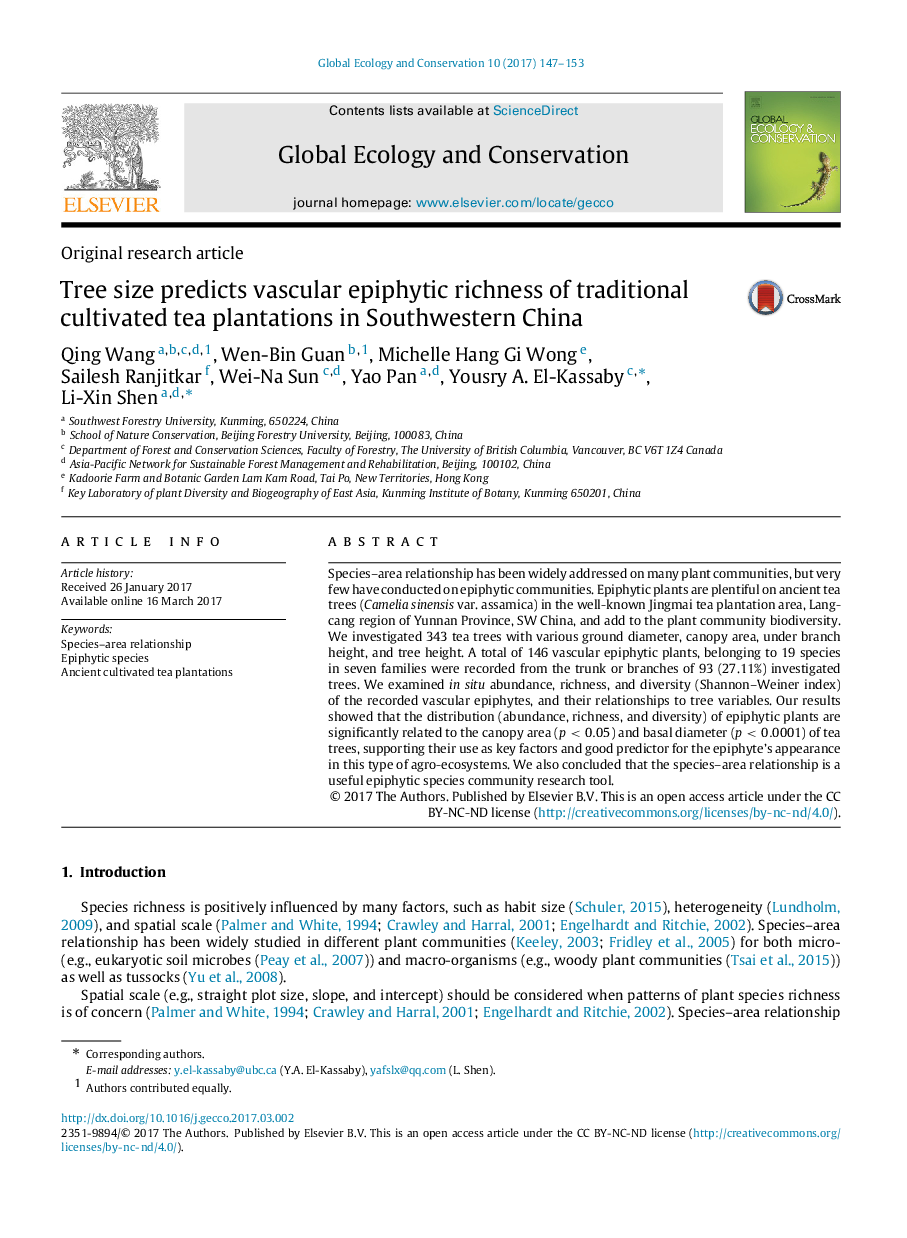| کد مقاله | کد نشریه | سال انتشار | مقاله انگلیسی | نسخه تمام متن |
|---|---|---|---|---|
| 5742381 | 1617657 | 2017 | 7 صفحه PDF | دانلود رایگان |
Species-area relationship has been widely addressed on many plant communities, but very few have conducted on epiphytic communities. Epiphytic plants are plentiful on ancient tea trees (Camelia sinensis var. assamica) in the well-known Jingmai tea plantation area, Langcang region of Yunnan Province, SW China, and add to the plant community biodiversity. We investigated 343 tea trees with various ground diameter, canopy area, under branch height, and tree height. A total of 146 vascular epiphytic plants, belonging to 19 species in seven families were recorded from the trunk or branches of 93 (27.11%) investigated trees. We examined in situ abundance, richness, and diversity (Shannon-Weiner index) of the recorded vascular epiphytes, and their relationships to tree variables. Our results showed that the distribution (abundance, richness, and diversity) of epiphytic plants are significantly related to the canopy area (p<0.05) and basal diameter (p<0.0001) of tea trees, supporting their use as key factors and good predictor for the epiphyte's appearance in this type of agro-ecosystems. We also concluded that the species-area relationship is a useful epiphytic species community research tool.
Journal: Global Ecology and Conservation - Volume 10, April 2017, Pages 147-153
